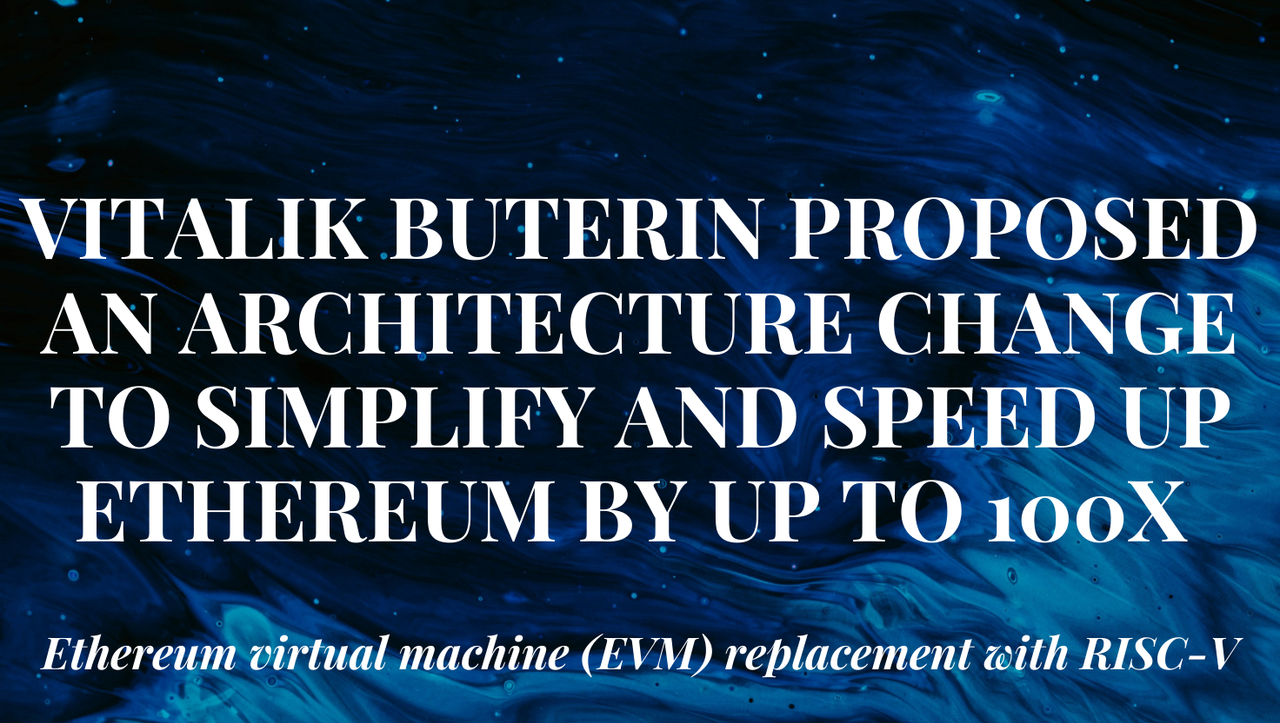Vitalik Buterin Proposed an Architecture Change to Simplify and Speed up Ethereum by up to 100X | EVM Replacement with RISC-V
3 comments

Pawel Czerwinski | Unsplash
Ethereum to this day remains an incredible technology, although there is a discussion addressing the unrealization of its potential. While Bitcoin seems to outperform time and time again, Ethereum's price has steadily decreased over the course of the year. It should also be noted that its adoption has not come to be contemplated as significant, beyond the use of the base chain to support dedicated DeFi platforms, NFTs, and certain decentralized applications.

Ethereum Price | CoinGecko - TradingView
We can even remember that at the time, the issue of high commissions at the time of making operations was discussed. There was a time when gas payments were quite high. We are talking about prices that at peak times exceeded $100 dollars. Of course, the denomination of this gas is based on gwei, but not to go into details, we could assure that there has been a substantial change after the implementation of Ethereum's Dencun update. The same would also allow significant improvements in future L2 networks. Put another way, this upgrade “decongested” the base layer, making transactions more efficient and reducing gas costs.
Let's agree that Ethereum's current architecture delivers. Although it is true that users who prefer the base layer are still dissatisfied. It is something that has to do with the fees, which are still high if we compare them with all the second layer solutions that we know at the moment, as well as if we focus on scalability. Because the base layer handles transactions in a really small amount before the gas price rises considerably. While the base layer can handle 30 transactions per second, the L2 can handle more than 1000, and if we think for a moment about key competitors, Solana reaches 65,000 TPS.
Even so, the course Ethereum takes could be very different from the one imagined. In recent days, information of great interest to the cryptographic community has come to light. It was disclosed in a May 3 blog post that Ethereum Co-Founder Vitalik Buterin had proposed a drastic change with respect to simplifying processes and greatly improving the performance of the blockchain. To achieve this, the proposal had in consideration the replacement of Ethereum's virtual machine (EVM) with RISC-V.
The idea behind the idea is to make Ethereum as simple as Bitcoin is. This means in a way that the protocol could acquire some similarity with the technology we know today from the undisputed leader in the blockchain world. It seems that the current model has several problems that make the development costs really excessive, as well as security issues.

Ecliptic Graphic | Unsplash
With the pursuit of protocol simplicity, not only would there be an improvement with respect to scalability. It would also improve the way in which people participate in governance. Buterin asserts that a much simpler protocol could make it easier for participants to understand and participate in research, development, and governance. Moreover, there would be a reduction in the cost of creating new infrastructure to interact with the protocol. As well as reductions in maintenance costs, the risks of catastrophic errors, and the surface of social attacks.
Currently the Ethereum base layer experiences a slowdown in its processes the instant the Ethereum virtual machine attempts and requires to be translated into foreign formats. Under this context RISC-V is a solution that would allow to speed up the processes because they would be optimized in a direct communication with the execution layer that the applications request. These operations could be accelerated by up to 100 times, with the detail that smart contracts would still be active. Perhaps from a developer's point of view, they could see the benefit of considering this architecture as opting for a common language with the intention of porting their code.
If migrating from EVM to RISC-V, the migration of the Merkle Patricia hex tree to a more functional one that avoids certain “bottlenecks”, such as the binary tree, would also have to be considered. With this, the hash function on which the tree is based would allow a gain in validator efficiency and a reduction in data costs.
This change is significant, there is no doubt about it. It will put into question a community that seeks for Ethereum to prosper and earn the place it deserves. This big change thought to extend up to 5 years, could drastically impact the way the chain receives support, due to the fact that it will require developers with a great degree of specialization, the consideration that there could be incompatibility with the previous version, and not having the necessary tools to address the situation.

- Main image edited in Canva.
- The following articles were consulted: decrypt.co and vitalik.eth.limo.
- Translated into English with DeepL.
Posted Using INLEO
Comments